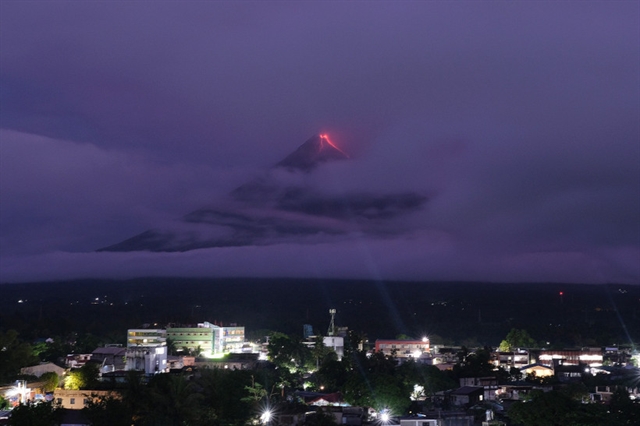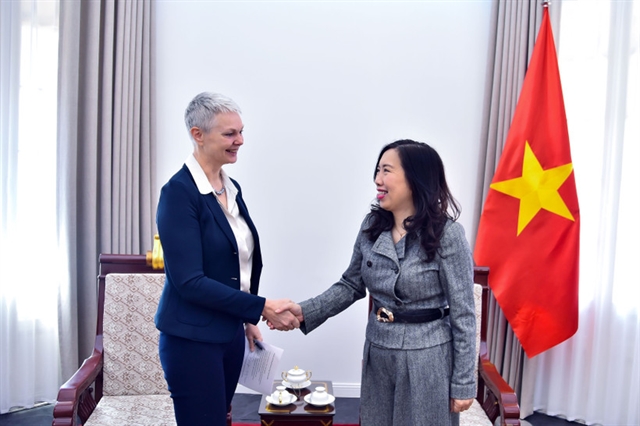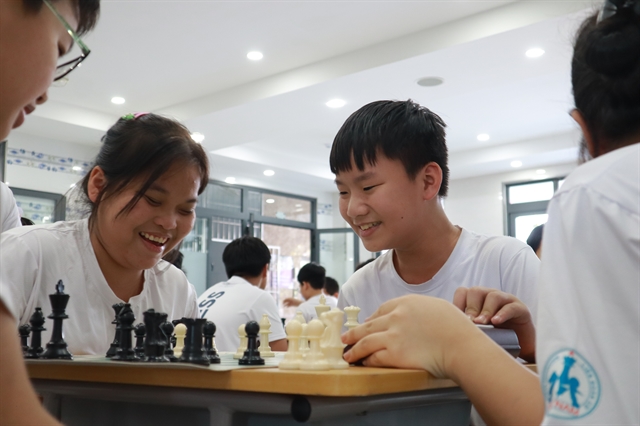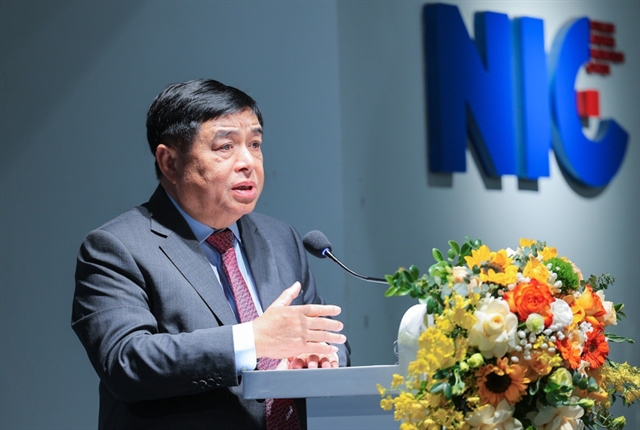 Society
Society

The former war correspondent for the Vietnam News Agency will today receive the Hồ Chí Minh Prize for Literature and Art, on the occasion of the late President Hồ Chí Minh’s birthday.
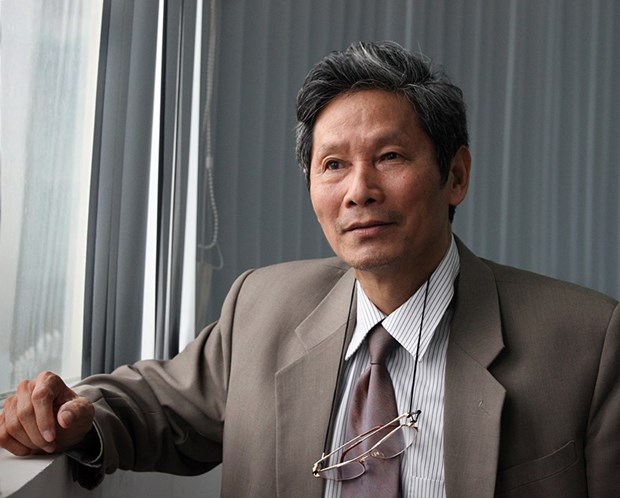
|
| Photographer Chu Chí Thành. — VNA/VNS Photo Vũ Dũng |
HÀ NỘI — For journalist and photographer Chu Chí Thành, being able to live and work in a vibrant period of Việt Nam’s history was what made his job worthwhile.
The former war correspondent for the Vietnam News Agency will today receive the Hồ Chí Minh Prize for Literature and Art, on the occasion of the late President Hồ Chí Minh’s birthday.
Being chosen for this prestigious honour brought many emotions flooding back to the 79-year-old. He said he is happy because his work reflected the late President Hồ Chí Minh’s thoughts and the righteousness of the Vietnamese people.
The award is even more meaningful to him as it was presented on Uncle Hồ's birthday.
Thành was born in Hưng Yên northern province.
In 1966, after he finished his third year at the Faculty of Literature University, he was among the young people selected to go into battle.
He attended a press training course in Hà Tây Province (now a Hà Nội suburb) to learn either news writing or photography, with Thành choosing the latter as he had already been taught how to write.
He also believed that during battles, the camera will be very useful as photographs can be used immediately and images can be forever saved as a document.
At the end of 1967, Thành was assigned to the military photo team of the Việt Nam News Agency - the spearhead force of journalism and communications during the war.
The young journalist reported from the frontlines in Hà Nội, Quảng Bình and Quảng Trị provinces during the years 1967-1973.
This was also the period when he recorded a vivid "battlefield diary" with thousands of photographs.
Among those, four photos “Hai người lính” (Two soldiers), “Tay bắt mặt mừng” (Shaking hands with happy smiles), “Cầu Quảng Trị” (Quảng Trị Bridge) and “Những bàn tay lưu luyến” (Nostalgic hands) were awarded the Hồ Chí Minh Prize for Literature and Art this year.
Fifty years have passed, but memories of those photos are still intact and clear in his mind.
In 1973, he went to Quảng Trị Province to observe prisoners returning after the Paris Agreement was signed.
By the end of March, he went to the border area at the Long Quang Post in Triệu Trạch Commune, Triệu Phong District.
For the first time, he witnessed the Sài Gòn Government soldiers crossing the border to joyfully meet liberation soldiers.
“It was amazing to see the Sài Gòn soldiers and the liberation forces happily welcoming them,” Thành said.
“They talked openly and patted each other’s shoulders. It was a very surprising moment because I used to think that they were on two sides of the battlefield.”
It was a moment Thành had to capture on film. Two soldiers stood side-by-side who, uniforms apart, could well be peers.
Thành said: “At that time, I thought the image of two soldiers with their arms around each other's shoulders was a symbol of the desire for peace and national reunification. The day of liberation was very close and the war was about to end. And I took the photograph in that joyous moment.”
The meeting was very quick, so Thành did not have time to record information about the Sài Gòn soldier, only knowing that he was a second-year student with a literature major from Sài Gòn.
From the few clues and thanks to help of colleagues and the whole community, a good thing came.
In 2015, Nguyễn Huy Tạo made himself known as the young soldier from the image.
Two years later, the Sài Gòn soldier Bùi Trọng Nghĩa, also came forward and in 2018, on the occasion of the 45th anniversary of the Paris Agreement (January 27, 1973-January 27, 2018), they recreated that very same image.
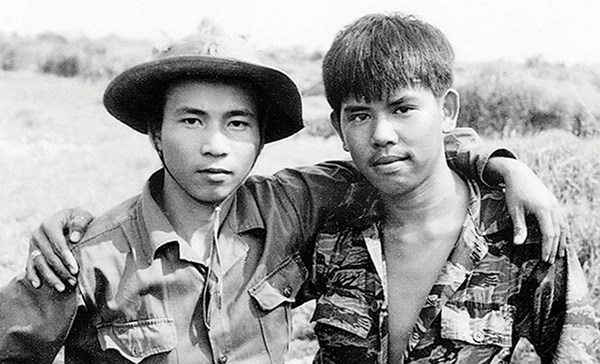
|
| Liberation soldier Nguyễn Huy Tạo, from Hà Nội (left) and Sài Gòn soldier Bùi Trọng Nghĩa in Quảng Trị Province in the spring of 1973. — VNA/VNS Photo Chu Chí Thành |
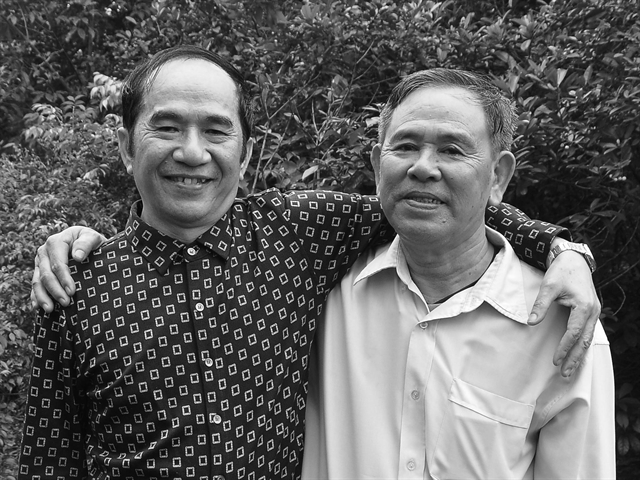
|
| The two soldiers met each other again after 45 years in Quảng Trị Province. — VNA/VNS Photo Chu Chí Thành |
In addition to the photos “Hai người lính” (Two soldiers) and “Tay bắt mặt mừng” (Shaking hands with happy smiles), there is another image of returning prisoners in 1973 in Quảng Trị.
This photograph, “Những bàn tay lưu luyến” (Nostalgic hands), was taken with Sài Gòn soldiers sitting on motorboats returning to the south. They turned back and waved to the north and to the liberation soldiers. On the shore, the liberation soldiers also waved.
The “Cầu Quảng Trị” (Quảng Trị Bridge) photograph captures the painful moment the soldiers from two sides came near to each other.
"The photo series expressed humane sentiments and Vietnamese people’s generous spirit. Perhaps this helped our nation put an end to the war and make a victory," Thành said.
“I am extremely touched and happy to receive this prestigious award. I am even happier when my photo series is recognised by everyone, which means that Hồ Chí Minh's thoughts will be replicated.
“Indeed, the photos that I and many war correspondents took at that time are historical documents with very high aesthetic value. The truth is presented convincingly by pictures, not by far-fetched deductions.”
Thành has spent his days engrossed in photography. His eyes, heart and mind are so focused on the camera that he did not hear the gong warning that bombs were coming. His photographs reflect the truth and make hearts flutter in the past, present or future.
Critic Vũ Đức Tân, from the Việt Nam Association of Photographic Artists, said that photographer Chu Chí Thành had a good fortune to become a war correspondent at the climax of the national liberation war.
It was a golden time to take photographs.
Tân said: “As a student of literature, Thành brings a lot of artistic, aesthetic and important messages into his work. I think that in both the field of art and press photography, he has neutral, simple and very humane values." — VNS


